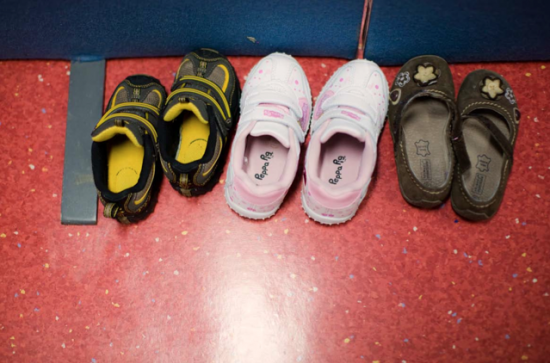
The new book written by Maynooth University historian Dr Ida Milne—‘Stacking the Coffins, Influenza, War and Revolution in Ireland 1918-19’—not only recounts how the influenza pandemic of 1918 disrupted Irish society, but it also reminds readers of the once decimating effects on children’s lives from now mostly preventable diseases.
The 1918-19 influenza pandemic had a far-reaching effect on Irish society at the time. Entire towns and cities were brought to a standstill, with schools, courts, libraries and businesses being forced to shut as it passed through. Hospitals were crammed, leaving medical staff stretched to their limit as they treated hundreds of patients each day.
‘Stacking the Coffins, Influenza, War and Revolution in Ireland 1918-19’ is the first Irish history of the disease to include statistics that allow us to analyse which groups were most affected. It also draws on the memories of child sufferers and their families, painting a picture of a world where disease cast an ever-present shadow over childhood.
Records show that over 20,000 people were killed by the pandemic, but it is widely believed that the total number of fatalities was higher, because many deaths went unrecorded as doctors struggled to keep on top of filling out paperwork while trying to treat the still-living.
Those most affected were children aged under five, and those aged 25-35 – meaning that the disease decimated young families. Many lost the family breadwinner along with small children, and even their home, if it was attached to the breadwinner’s job.
People who dealt with the public, like policemen, doctors, nurses, the clergy and postmen, were more likely to catch this disease, and die from it – as well as pass it on to members of their families.
The very poor – families with undependable incomes and awful living conditions such as those in the Dublin tenements – were also more likely to die. There were stories of caretakers breaking down the doors of homes in these impoverished communities where the occupants had not been seen for a while, and finding whole families dying or already dead.
As part of her research, Dr Milne interviewed survivors of the pandemic who shared stories of what it was like to suffer from this influenza as children, and spoke with the families of the bereaved on how it changed their lives.
Speaking about theses interviews, Dr Milne says: “The flu pandemic in 1918 was notable because it infected and killed otherwise healthy adults, and not just the more vulnerable elderly and very young. However, this in no way takes away from the huge number of children that were affected.”
“People forget what childhood illness once meant. In Ireland in the 1910s, 20 percent of the annual 70,000 average deaths were children under the age of five, with many dying from infectious diseases that today have almost been eradicated.”
“Just a couple of generations on, and many of us seem to have become unaware as to how diseases that can now be treated relatively easily were once a very tangible threat to children’s lives. Knowing how pandemics like this one could rip through communities, it is worrying now to see new parents turning against something as essential in preventing diseases as vaccinations.”
“Immunologists still think it is only a matter of time before such an epidemic comes again, and that is why understanding this epidemic and how it affected society is so important.”
Commenting on the publication of ‘Stacking the Coffins, Influenza, War and Revolution in Ireland 1918-19,’ Professor Ray O’Neill, Vice-President for Research and Innovation, said: “Dr Milne’s research gives us an important and compelling account of the Irish experience of this devastating pandemic. It provides us with a very direct reminder of human vulnerability to disease in the absence of effective prevention and treatment.”
Dr Milne is currently funded by an Irish Research Council and Marie Curie Actions international development award to research the social history of childhood disease in 20th century Ireland. This fellowship is shared between Queen's University Belfast and Maynooth University.
‘Stacking the Coffins, Influenza, War and Revolution in Ireland 1918-19,’ published by Manchester University Press, will be launched on Wednesday, 6 June at 6:00pm in Hodges Figgis, Dawson Street, Dublin.
